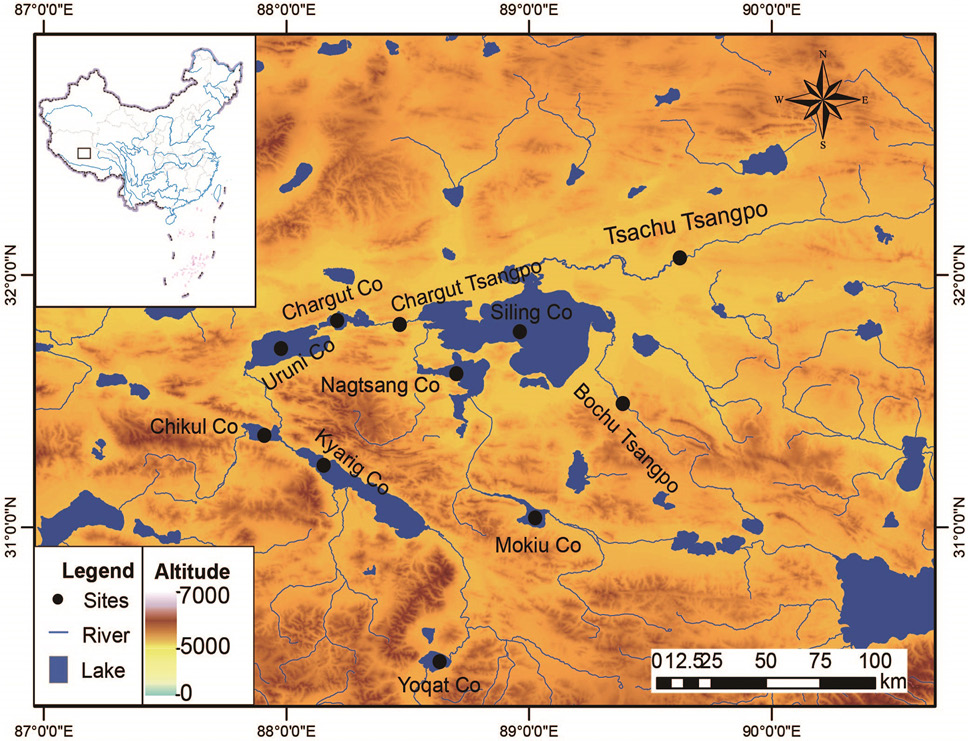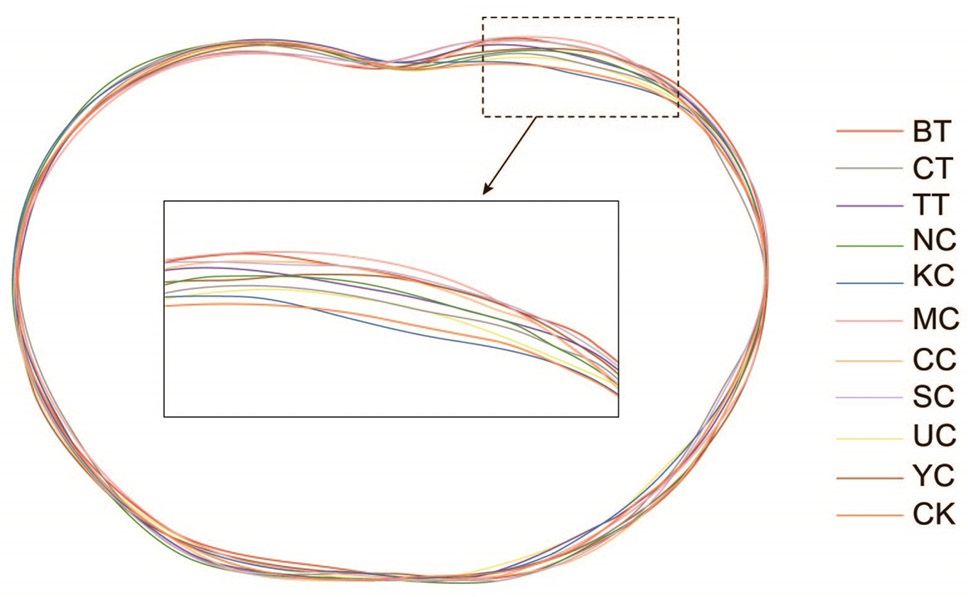Evaluation of the Lapillar Otolith Shape as a Tool for Discrimination of Stock of Naked Carp, Gymnocypris selincuoensis in the Tibetan Plateau
Evaluation of the Lapillar Otolith Shape as a Tool for Discrimination of Stock of Naked Carp, Gymnocypris selincuoensis in the Tibetan Plateau
Kang Chen1,2, Dekui He1, Chengzhi Ding3,4, Yintao Jia1 and Yifeng Chen1*
Study area of northern Tibet and sampling sites (black dot).
Periodogram of 20 harmonics for 30 randomly selected otolith of G. selincuoensis. Mean (solid dots) and standard deviation (whiskers) represent the accumulated percentage of variance (% Var accum). Otolith contours shapes defined by 2,6,10,14 and 18 harmonics were plotted.
Non-metric multidimensional scaling (NMDS) ordination plot of otolith from eleven stocks (stress factor =0.0013).
Linear discriminant analysis scores for the classification of G. selincuoensis in northern Tibet using otolith shape variables including shape indices and Fourier descriptors. The first discriminant axis explained 32.6% variation and the second axis explained 18.6% variation (Wilks’ λ = 0.263).
The average shapes of the lapillus otolith from eleven stocks in northern Tibet. Outlines were rebuilt use average normalized elliptical Fourier coefficients within each stock. One most different area was amplified in black frame.
Boxplots of four shape indices for eleven otolith stocks. Bold transverse line in each box represent the median value and the rectangle means average value.
















